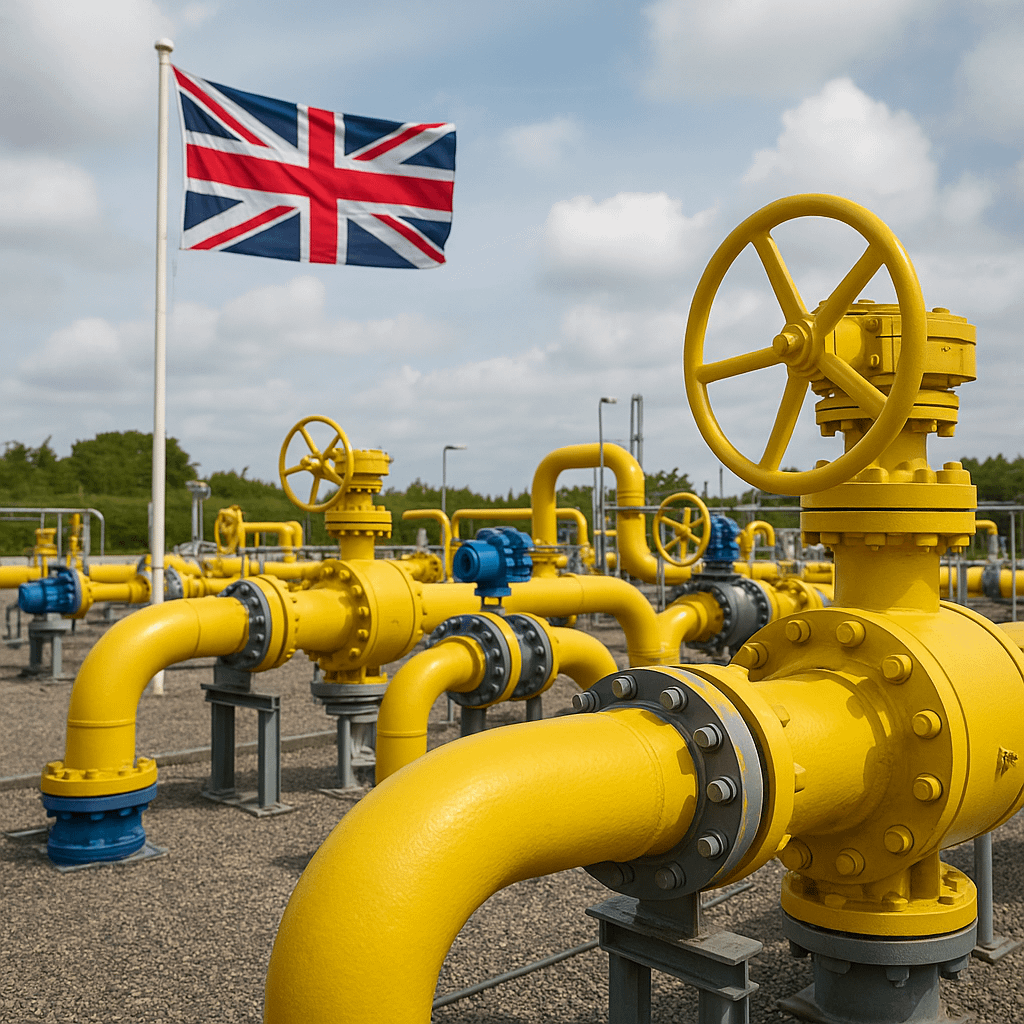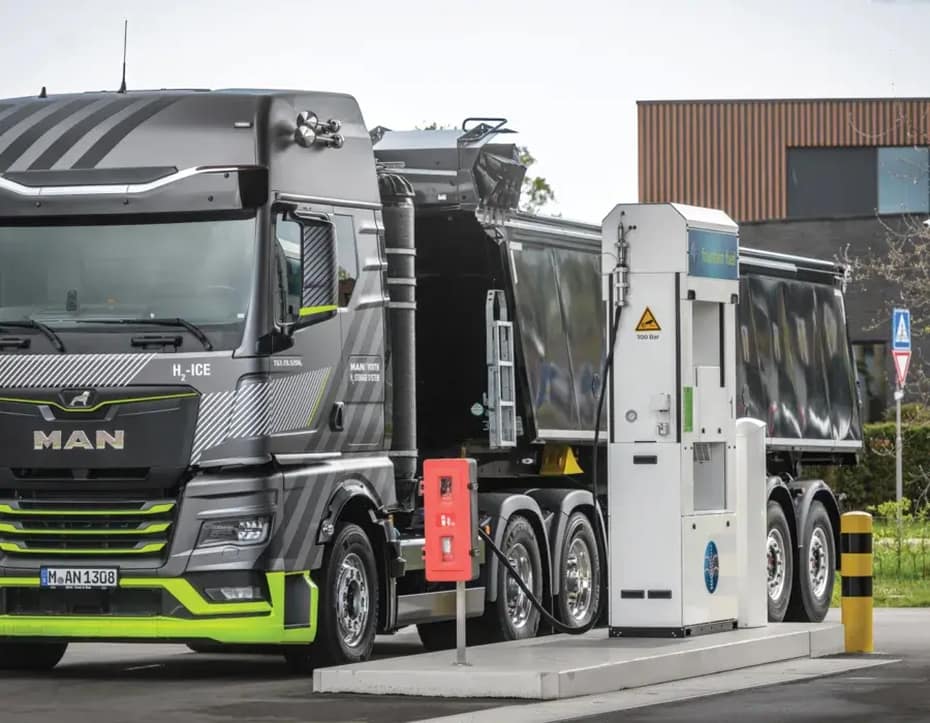The UK Gas Grid’s Prisoner’s Dilemma: How Strategic Limbo Is Maximising Costs and Delaying Decarbonisation

The United Kingdom faces a unique strategic impasse over the future of its gas grid strategy. Unlike European neighbours that have chosen clear pathways—whether phasing out gas entirely or committing to hydrogen conversion—the UK is trapped in a classic prisoner’s dilemma where rational individual decisions by network operators are producing collectively irrational outcomes. This strategic limbo is not merely a policy disagreement; it is actively increasing costs for consumers, undermining investor confidence, and threatening the UK’s net-zero commitments. This article examines the UK gas grid strategy in detail, outlining why current decisions from government and network operators are driving up long-term costs.
This piece also builds on my earlier work on UK innovation and industrial strategy, including Field Notes: UK Science Commercialisation and my analysis of government funding for emerging hydrogen technologies.
The UK Gas Grid Strategy: A Three-Way Standoff
The National Infrastructure Commission’s Definitive Position on the UK Gas Grid
The National Infrastructure Commission (NIC) has provided the clearest analysis of the problem. In its Second National Infrastructure Assessment, the NIC concluded that the UK should plan for the end of methane use in heat, recommending a ban on new gas grid connections from 2025 and an end to fossil fuel boiler sales by 2035. The commission’s analysis was unequivocal: an energy system with hydrogen blending would be around 1.2 times as expensive as one without, leaving “no public policy case” for widespread hydrogen heating.
Key Cost Estimates:
- £65 billion – Leaked NIC draft estimate for gas grid decommissioning
- £17-25 billion – Arup report commissioned by NIC and Ofgem (conservative estimate)
- £74 billion – Potential maximum cost due to uncertainties, cited in later academic and policy analysis
- £26 billion – Current regulated asset value (RAV) of gas networks through 2021-2026
Crucially, the NIC identified that widespread blending strategies would ultimately increase gas grid decommissioning costs. Leaked drafts of the report suggested decommissioning could cost £65 billion, a figure the NIC did not deny when approached for comment. Subsequent analysis by Arup refined this to £17-25 billion, though acknowledging costs could reach £74 billion due to uncertainties, a range echoed in UCL’s gas decommissioning policy briefing.
Gas Network Operators’ Defensive Investment Strategy
Facing an existential threat to their business model, UK gas network operators have responded by investing heavily in blending infrastructure. National Gas, Cadent, SGN, and Wales & West Utilities are collectively spending billions to enable biomethane and hydrogen blending into the grid.
The business case is straightforward from their perspective:
- The regulated asset value (RAV) of gas networks is £26 billion through 2021-2026, as referenced in Parliamentary written evidence on gas network decommissioning
- If investment ceases, this could drop to £3 billion by 2050, representing catastrophic asset stranding
- Blending infrastructure creates a “strategic option value”—if the government ultimately maintains gas, operators have a viable business; if government phases out gas, they can argue their investments were made in good faith and should be compensated
National Gas’s FutureGrid programme has already tested hydrogen blending from 2% to 100% on decommissioned transmission assets, finding “no major operational issues”. The company has mapped 66 potential biomethane connection projects totaling 5.9 TWh annually. These investments, while technically feasible, are creating a path dependency that makes eventual decommissioning more expensive.
Government Contradiction: The Root of the UK Gas Grid Strategy Dilemma
The UK government’s position is fundamentally contradictory. On one hand, it is consulting on banning gas boilers from 2035 and new gas grid connections from 2025 via the Heat and Buildings Strategy. On the other, a government spokesperson stated categorically: “Our gas network will always be part of our energy system and therefore any such estimations are wrong”.
The Core Contradiction: The UK government simultaneously signals gas phase-out while promising gas network continuity, creating a strategic vacuum where network operators must make billion-pound investment decisions without policy clarity.
This contradiction is not accidental. It reflects deep political divisions about how to decarbonise heat and fear of public backlash. Polling suggests widespread resistance to mandated moves away from gas heating. The result is a “wait-and-see” approach that avoids committing to either phase-out or conversion, effectively forcing operators to make high-stakes decisions in an information vacuum—while hydrogen infrastructure policy documents such as the Hydrogen Transport and Storage Networks Pathway keep options open.
The Prisoner’s Dilemma Payoff Matrix for UK Gas Grid Strategy
The UK gas grid situation perfectly illustrates a prisoner’s dilemma where rational individual decisions produce collectively suboptimal outcomes.
Operator Strategy: Invest in Blending
If Government Phases Out Gas: Operators face the worst outcome—£74 billion in total costs comprising both their blending investments and eventual gas grid decommissioning expenses. The blending infrastructure becomes stranded, and consumers pay for both the failed investment and the subsequent decommissioning.
If Government Maintains Gas: Operators have a viable future business model with blending infrastructure operational. They maintain market share and can transition to a hydrogen economy if it materialises.
Consumer Impact: Higher bills in the short term as blending costs are passed through network charges.
Operator Strategy: Defer Investment
If Government Phases Out Gas: The socially optimal outcome—£17-25 billion in decommissioning costs only, without wasted blending investment. Consumers avoid paying for stranded assets.
If Government Maintains Gas: Operators lose market share as competitors invest in blending. Assets become stranded anyway due to falling customer numbers as heat pump adoption accelerates, but without having invested in alternatives.
Consumer Impact: Higher bills in the long term as remaining customers bear the cost of stranded assets and accelerated depreciation.
The Nash Equilibrium: Invest Despite Risks
Game theory predicts that operators will choose to invest in blending—even knowing it may increase total system costs—because deferring investment carries the catastrophic risk of losing market position if government maintains gas. This creates a dominant strategy where all operators invest in blending, producing the £74 billion outcome.
| Operator Strategy | If Government Phases Out Gas | If Government Maintains Gas | Consumer Bill Impact |
|---|---|---|---|
| Invest in Blending | £74bn total cost (blending + decommissioning) | Blending infrastructure operational | Higher short-term (blending costs) |
| Defer Investment | £17-25bn decommissioning only | Loss of market share, asset stranding | Higher long-term (stranded asset recovery) |
How UK Gas Grid Strategy Is Driving a Cost Explosion
The prisoner’s dilemma is producing a cost explosion through several mechanisms:
1. Compounding Infrastructure Costs
When operators invest in blending infrastructure (£ billions), these assets have a 40-50 year depreciation schedule. If the grid is decommissioned after 10-15 years, the remaining asset value must be recovered from consumers, compounding gas grid decommissioning costs.
2. The Death Spiral Effect
Falling customer numbers as heat pump adoption increases raise per-customer network costs. Ofgem has warned that “increasing per-customer costs lead to reduced affordability for gas, potentially locking vulnerable customers into fuel poverty or forcing them onto more expensive electric heating”. This could trigger a “death spiral” where rising costs accelerate customer defection, a concern reflected in Ofgem’s Consumer Vulnerability Strategy work and in the Committee on Fuel Poverty’s 2024 report.
3. Opportunity Cost of Delayed Decisions
Every year of inaction increases total transition costs. Denmark began planning its gas phase-out in 2018, giving over a decade for orderly transition, as highlighted in analyses such as From Gas to Clean Heating. The UK’s indecision means it will face a compressed timeline, increasing both economic disruption and cost.
4. Uncertainty Premium
Investors demand higher returns for uncertain regulatory environments. Ofgem has warned that “acting without a clear decommissioning plan could undermine network operators’ financial stability, raise debt costs, and increase consumer bills”.
International Comparator Analysis: How Other Countries Handle Gas Grid Strategy
Denmark: The Phase-Out Model
Denmark provides the clearest contrast to the UK’s limbo. The Danish government established a mandatory phase-out by 2030 with municipal enforcement powers. Municipalities can require buildings to connect to district heating networks and prohibit gas heating in designated zones, supported by a regulatory framework for district heating described in Denmark’s district heating planning guides.
Key differences:
- State ownership: Denmark’s gas distribution operator Evida is state-owned, enabling coordinated decommissioning planning
- Compensation mechanism: Decommissioning costs are factored into regulated asset values, providing operator certainty
- Alternative infrastructure: 74% district heating penetration provides a ready alternative
- Political consensus: Cross-party agreement eliminates policy volatility and underpins ambitions to phase out gas boilers by 2035
The UK cannot easily replicate this model due to low district heating penetration (2%), municipal planning limitations, and privatised network ownership requiring complex compensation negotiations.
Netherlands: The Coordinated Conversion Model
The Netherlands has chosen a hydrogen conversion pathway but with strict coordination between gas and electricity TSOs. Gasunie and TenneT conduct joint studies on offshore energy hubs where electricity is converted to hydrogen, as outlined in the Hydrogen Network Netherlands project and the Dutch government’s Hydrogen Strategy.
Key differences:
- Joint planning: The Main Energy Infrastructure Programme involves government, TSOs, and regional actors in coordinated planning
- Clear criteria: Only pipelines “no longer needed for gas transmission” convert to hydrogen
- Policy realism: The Netherlands cancelled mandatory hydrogen blending obligations when budget priorities shifted, demonstrating flexibility
Germany: The Hydrogen Core Network Model
Germany’s hydrogen strategy involves building a dedicated 9,040 km hydrogen core network with €18.9 billion investment, pre-approved by the Federal Network Agency, as described in official communications on the Hydrogen Core Network.
Key differences:
- Pre-emptive regulatory approval: BNetzA approved the network application, giving investors certainty
- Public financial backing: A government-backed amortisation account assumes financial risk if hydrogen demand is insufficient
- Industrial anchor demand: Major ports and chemical clusters provide guaranteed hydrogen demand
| Policy Element | Denmark | Netherlands | Germany | UK |
|---|---|---|---|---|
| Decommissioning timeline | 2030 (mandatory) | Not specified (demand-led) | Not specified (pipeline-by-pipeline) | No timeline |
| Funding mechanism | Compensation in regulated asset value | Public-private partnerships | Government-backed amortisation account | None |
| Alternative infrastructure | 74% district heating | Coordinated hydrogen grid | Hydrogen core network | Individual heat pumps |
| Regulatory clarity | Municipal mandates | Joint TSO planning | Pre-approved network plan | Contradictory statements |
Why the UK Cannot Easily Follow Other Gas Grid Strategy Models
The UK’s prisoner’s dilemma is uniquely severe due to structural factors:
1. Too Small for a Hydrogen Core Network
Unlike Germany’s industrial clusters spread across federal states requiring 9,040 km of new hydrogen pipelines, the UK lacks sufficient industrial hydrogen demand to justify a comparable network. Without anchor industrial users, hydrogen infrastructure would primarily serve heating, which the NIC has shown is economically inefficient.
2. Too Large for a Simple Phase-Out
Denmark’s model works because of concentrated population centres and high district heating penetration. The UK’s dispersed housing stock and low district heating penetration (2% vs Denmark’s 74%) make mass conversion to district heating prohibitively expensive, estimated at £100+ billion.
3. Institutional Fragmentation
The UK lacks the integrated planning institutions of the Netherlands and Germany. There is no formal mechanism for National Gas, National Grid Electricity, and government to conduct joint system planning. This fragmentation prevents coordinated infrastructure development.
4. Political Risk Aversion
Denmark’s cross-party consensus on phase-out and Germany’s grand coalition on hydrogen infrastructure reflect stable political commitments. The UK’s volatility—including the 2025 gas phase-out deadline being pushed back by a decade—creates regulatory uncertainty that exacerbates the prisoner’s dilemma.
Consumer Consequences: The Bill Impact of UK Gas Grid Strategy
The ultimate victims of the prisoner’s dilemma are energy consumers. The current trajectory produces several negative outcomes:
1. Paying for Stranded Assets
If operators invest in blending and government subsequently phases out gas, consumers will pay for stranded blending infrastructure through their bills for decades. Ofgem has warned this could “lock vulnerable customers into fuel poverty”.
2. The “Two-Transition” Tax
Consumers face paying for both the blending transition (through network charges) and the eventual gas grid decommissioning (through accelerated depreciation and decommissioning fund recovery). This “double payment” could add hundreds of pounds to annual bills.
3. Uncertainty Premium
The lack of clear policy increases the cost of capital for network operators, which is passed to consumers. Moody’s has warned that regulatory uncertainty could increase financing costs by 50-100 basis points.
4. Inequitable Distribution
Wealthier households can afford heat pumps and leave the gas grid early, leaving lower-income households to bear a disproportionate share of rising network costs. This “energy apartheid” could see gas heating become unaffordable for those who can least afford alternatives.
The Decarbonisation Delay Caused by UK Gas Grid Strategy
Beyond cost implications, the prisoner’s dilemma is delaying UK decarbonisation:
1. Distraction from Electrification
Network operator focus on blending infrastructure diverts attention and resources from the more cost-effective solution: rapid heat pump deployment and building efficiency improvements. The UK is installing heat pumps at half the rate of France and one-third the rate of Finland. I explore similar trade-offs between hydrogen and electrification in heavy transport in Hydrogen or Double the Trucks?.
2. Blending as a “Bridge to Nowhere”
Even at full 20% hydrogen blending capacity (60 TWh), this represents less than 9% of current gas demand and delivers only modest emissions reductions. Meanwhile, it creates a moral hazard by suggesting consumers can delay heat pump adoption.
3. Policy Bandwidth Consumption
The endless consultations on blending safety cases, gas grid decommissioning costs, and hydrogen strategy consume limited government policy capacity that could be directed to implementing clear phase-out pathways.
Breaking the Deadlock in UK Gas Grid Strategy
The prisoner’s dilemma can only be resolved through credible government commitment to one pathway with appropriate compensation mechanisms. The options are:
Option 1: Phase-Out with Compensation
- Announce a firm gas heating phase-out date (2035-2040)
- Establish a decommissioning fund financed through carbon pricing
- Provide regulated asset value compensation to network operators
- Accelerate heat pump deployment and district heating where viable
Option 2: Hydrogen Conversion with Conditions
- Commit to hydrogen heating only where cost-effective (industrial clusters)
- Define clear criteria for pipeline conversion vs. decommissioning
- Establish public-private financing for hydrogen infrastructure
- Mandate that blending is transitional only, with automatic decommissioning triggers
Option 3: Hybrid Approach
- Phase out gas in urban areas with district heating potential
- Convert rural gas networks to hydrogen where cost-effective
- Provide targeted support for vulnerable consumers in both scenarios
The Cost of Continued Limbo in UK Gas Grid Strategy
Each year of inaction increases total transition costs by an estimated £2-3 billion through delayed efficiency improvements, continued gas dependency, and compounding infrastructure costs. The prisoner’s dilemma is not a stable equilibrium—it is a costly delay mechanism that benefits no one except those with a short-term interest in maintaining the status quo.
The Bottom Line: For the 23 million UK households dependent on gas heating, the question is not whether the gas grid will change, but how much they will pay for the government’s failure to decide.
The UK stands at a decision point. Denmark shows that decisive phase-out is achievable with political will. The Netherlands and Germany demonstrate that hydrogen conversion can work with proper coordination. But the UK’s current path—simultaneously encouraging and discouraging gas network investment—is the worst of all worlds, maximizing costs while minimizing clarity.
The prisoner’s dilemma can be broken, but only through decisive government action. Until that happens, consumers will continue to pay the price for strategic limbo.
For more context on how this fits into wider UK hydrogen policy and infrastructure debates, see also my analysis of the UK hydrogen strategy versus Netherlands progress and my piece on government funding for emerging hydrogen technologies. For a broader view of technology cost curves, you can also read Battery Energy Density: State of the Art and Future Pathways.
Frequently Asked Questions
Why is the UK gas grid strategy described as a prisoner’s dilemma?
Because individual gas network operators are acting rationally to protect their asset base, but their combined actions lead to higher overall system costs. Without clear government direction, every operator invests in blending technologies “just in case”, resulting in a suboptimal and more expensive outcome for consumers.
Is hydrogen blending a long-term solution for UK heating?
No. Even at the maximum 20% blending limit, hydrogen contributes only modest emissions reductions and cannot replace the majority of natural gas used for heating. Blending is technically feasible but economically inefficient and risks delaying heat pump rollout.
Why can’t the UK follow Denmark’s approach to gas phase-out?
Denmark’s model relies on high district heating penetration, strong municipal powers, and publicly owned networks. The UK’s housing stock, planning system, and privately owned gas networks make a rapid phase-out far more complex and costly.
What would a credible long-term UK gas grid strategy look like?
Either a decisive phase-out pathway with compensation for networks, or a fully planned hydrogen conversion where industrial clusters anchor demand. Both require clear criteria, stable regulation, and financial safeguards to prevent stranded assets.


